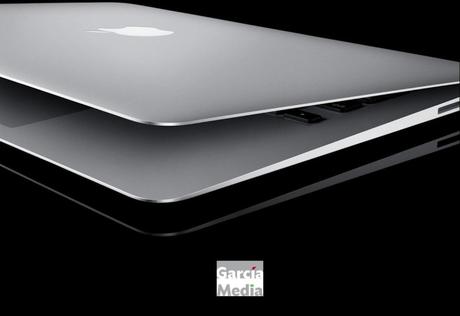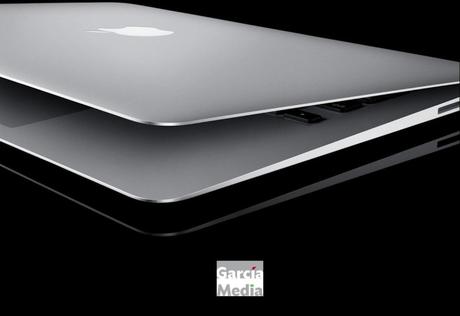

Behind the look and functionality of anything Apple: commitment to and a passion for design at the top
I don't know about you, but I do have a fascination with anything Apple produces. While I am not into the design of phones, computers and tablets, I enjoy analyzing what makes these products different and essential in our lives.
I also see tremendous possibilities for all of us in media design to learn from concepts of design generally: we can be inspired by Bauhaus inspired furniture, or the way type and color come together on a billboard or restaurant menu, or even a on a napkin.
That is why I have enjoyed reading an interview with Mark Kawano, founder of Storehouse. Kawano was a senior designer at Apple for seven years during which he worked on Aperture and iPhoto. Later, Kawano became Apple's User Experience Evangelist.
In an interview, Kawano discusses four myths about Apple's design and the culture that inspires it.
Each of these has an application or interpretation that we could give it in terms of design in a newsroom.
What we can learn from Kawano's interview:
MYTH #1: Apple Has The Best Designers
What Kawano said:
“It's actually the engineering culture, and the way the organization is structured to appreciate and support design. Everybody there is thinking about UX and design, not just the designers. And that’s what makes everything about the product so much better . . . much more than any individual designer or design team.”
What we can learn:
In my experience, the key here is that everyone is thinking about design. Everyone is thinking like a designer. This is key.
My most successful projects of the past four decades can testify to that. If those at the top ---who are not designers themselves---believe and think like a designer, things are going to happen. The contrary is also true: when there is no design thinking at the top, usually there is no visible commitment, then the design project becomes the property of a few visually-minded people, normally not in top positions of authority. The project--and the design---suffer.
Obviously, Steve Jobs hired the right people, very design conscious, and the rest is the type of products that seduce us visually before we even touch them.
My own takeaway: Good design must start at the top
MYTH #2 Apple’s Design Team Is Infinite
What Kawano said:
"Every designer could hold their own in both creating icons and new interfaces, for instance. And thanks to the fact that Apple hires design-centric engineers, the relatively skeleton design team could rely on engineers to begin the build process on a new app interface, rather than having to initiate their own mock-up first."
What we can learn:
Just like at Apple, the company tends to hire design-centric engineers, we need to hire digital and design minded journalists. It would help if the CEO and publishers also understand and support design, which is not always the case.
I am sure that those same engineers at Apple who are design driven, are not undermining good engineering to do so. In many newsrooms, there is the division of the word people and the visual people. Sometimes there are big gaps between these two groups. It should not be.
My own takeaway: Good media design requires that the journalists respect design and the designers believe and support the importance of the story, of words.
MYTH #3 Apple Crafts Every Detail With Intention
What Kawano said:
"Apple products are often defined by small details, especially those around interaction. Case in point: When you type a wrong password, the password box shakes in response."People are constantly experimenting with these little items, and because the teams all kind of know what other people have done, once a feature comes up--say we need a good way to give feedback for a password, and we don’t want to throw up this ugly dialog--then it’s about grabbing these interaction or animation concepts that have just been kind of built for fun experiments and seeing if there’s anything there, and then applying the right ones.”
What we can learn:
It's all in the details. The best media design will be characterized by attention to detail. Whether one is designing a lifestyle page or a tablet edition, users appreciate those details that make life easier (a good table of contents for print, a real good finger engagement for digital devices).
Every successful project that I remember in my own career was characterized by a "moment of detail" where the product became more user friendly as a result. At The Wall Street Journal it was colorizing the What's News column; at El Tiempo, of Colombia, reducing the number of sections to make a reader's journey through the newspaper quicker and more pleasant; at Germany's Die Zeit, details in the way long texts were broken up with subheads. More recently, at Norway's Aftenposten, we have introduced a content flow for print that does justice to that specific medium.
In each case, a detail of the design process became the thing that the audience appreciated the most. Apple people have it clear: it is not just the overall picture, or how that new Mac looks.
My own takeaway: it is the details that make products more essential in our lives. Same applies to our media design.
MYTH #4 Steve Jobs’s Passion Frightened Everyone
What Kawano said:
"The reality is, the people who thrived at Apple were the people who welcomed that desire and passion to learn from working with Steve, and just really were dedicated to the customer and the product. "
What we can learn:
Steve Jobs was a demanding and visionary leader. It's amazing that the best editors, publishers and art directors with whom I have worked have also had those qualities, in addition to being firm and compassionate.
Jobs had a passion for what he did, how he inspired and how he envisioned the products his company created. He moved forward.
He paid attention to details. He trusted those under him: the key management skill of training and trusting the people who will make your vision and goal happen.
Our media industry has never been in greater need of those qualities. It is a turbulent time in most newsrooms, when change and disruption should be welcome.
It takes passion to do so effectively.
My ultimate takeaway from reading the interview with designer Kawano:
Before you sketch your first idea, you need to have the support and enthusiasm of those at the top. They must be believers. They must outline their vision.
The rest we can do, and that's not a myth.

